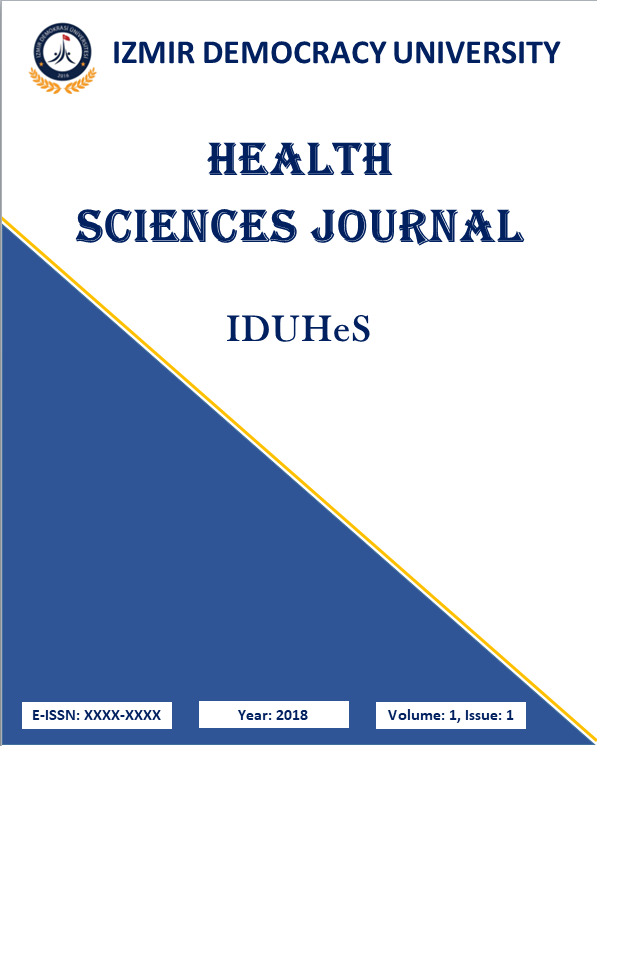6 VE 16 YAŞ OKUL ÇOCUKLARI ARASINDAKİ SSI-4-TR / KEŞİDA-4 DÖRDÜNCÜ BASKISININ TÜRKÇE VERSİYONUNUN GÜVENİLİRLİĞİ VE GEÇERLİLİĞİ
Kekemeliğin şiddetini belirlemek ve tedavi sonuçlarını değerlendirmek için standart ve güvenilir bir araca ihtiyaç bulunmaktadır. Kekemeliğiölçmek için en güvenilir araçlardan biri Kekemelik Önem Düzeyi - Dördüncü Baskısı'dır (SSI-4). Bu çalışmanın amacı, okul çağındakikekemeli çocuklarda Kekemelik Şiddet Ölçeği'nin (SSI-4-TR) Türkçe versiyonunun geçerlilik ve güvenilirliğini değerlendirmektir. Başvurusüreci için orijinal SSI-4 alınmıştır. Türkçe uygulamasının çevirisi üç bağımsız uzman tarafından değerlendirildikten sonra 6-16 yaş arası 47çocuk çalışmaya dahil edilmiş ve anketleri tamamlanmıştır. Kekemelik engeli olan çocuklar, SSI-4 ile test edilmiş ve kekemeliğin şiddetiuygulayıcı tarafından kaydedilmiştir. Veriler, test-tekrar test yöntemine dahil edilen rastgele seçilen 18 çocuktan toplanmıştır. Uygulayıcıya ekolarak üç bağımsız uzman tarafından değerlendirilmiştir. SSI-4'ün en yüksek güvenilirlik ortalaması 0,94 ve maksimum mantıksal doğrulamaistatistiği 0,846 olarak kaydedilmiştir. Kekemelik şiddeti değerlendirmesi için 0.73 ile 0.903 arasındaki bir ritim boşluğu optimum olarak kabuledilmiştir. Türkiye SGK-4'ün genel güvenilirlik düzeyi için, Cronbach's alpha, güvenilir bir kekemelik değerlendirme aracı olduğunu gösteren0.94 olarak kaydedilmiştir. Test-tekrar test yöntemi, gözlemcilerin güvenilirlik çalışmaları ve iç tutarlılık oranı, SSI-4'ün oldukça güvenilir olduğukanıtlanmıştır. SGK-4'ün tercüme edilmiş Türkçe versiyonu kekemelik değerlendirmesi için güvenilir ve geçerli bir araçtır.
Anahtar Kelimeler:
SSI-4, SSI-4-TR, kekemelik şiddeti değerlendirme aracı, KEŞİDA
RELIABILITY AND VALIDITY OF THE TURKISH VERSION OF THE STUTTERING SEVERITY INSTRUMENT, FOURTH EDITION (SSI-4-TR/ KEŞİDA- 4) BETWEEN 6 AND 16 YEARS OLD SCHOOL CHILDREN
In order to determine the severity of stuttering and to evaluate the results of treatment, we need a standard and reliable instrument. One of themost reliable tools for measuring stuttering is the Stuttering Severity Instrument – Fourth Edition (SSI-4). The purpose of this study was toevaluate intra and inter-rater reliability of the Turkish version of the Stuttering Severity Instrument (SSI- 4-TR) in school-aged children withstuttering. For the application process, the original SSI-4 was obtained. After the translation for the Turkish application had been completed bythree independent experts, 47 children aged between 6 and 16 were included in the study, and their questionnaires were completed. Children witha stuttering impediment were tested with the SSI-4, and the severity of stuttering was recorded by the practitioner. The data were collected from18 randomly chosen children who were included in the test-retest method. They were evaluated by three independent experts in addition to thepractitioner. The highest reliability average of SSI-4 was recorded as 0.94 and the maximum statistic of logical validation as 0.846. A rhythmgap from 0.73 to 0.903 is accepted as optimum for stuttering severity assessment. For the overall reliability level of the Turkish SSI-4, Cronbach’salpha was recorded as 0.94, showing that it is a credible stuttering assessment device. The test-retest method, credibility studies of observers, andthe internal consistency ratio proved that the SSI-4 is highly reliable. The translated Turkish version of SSI-4 is a reliable and valid instrumentfor stuttering evaluation.
Keywords:
SSI-4, SSI-4-TR, assessment device for stuttering severity,
___
- REFERENCES
- 1. ASHA: definitions of communication disorders and variations [Internet]. American Speech-Language-Hearing Association; 1993. Available from: www.asha.org/policy 2. Boey RA, Wuyts FL, Van de Heyning PH, De Bodt MS, et al. Characteristics of stuttering-like disfluencies in Dutch-speaking children. Journal of Fluency Disorders 2007;32(4):310–329. 3. Conture EG. Stuttering: its nature, diagnosis, and treatment. Boston (MA): Allyn & Bacon; 2001. 4. Fibiger S. Stuttering. In: International encyclopedia of rehabilitation. 2010. 5. George D, Mallery P. SPSS for Windows step by step: a sample guide and reference. Boston (MA): Allyn & Bacon; 2003. 6. Gillam RB, Logan KJ, Pearson NA. TOCS: test of childhood stuttering. Austin (TX): PRO-ED; 2009. 7. Haynes WO, Pindzola RH. Diagnosis and evaluation in speech pathology. 5th ed. Boston (MA): Allyn & Bacon; 1997. p. 238–245. 8. Nippold MA. Stuttering in preschool children: direct versus indirect treatment. Language, Speech, and Hearing Services in Schools 2018;49(1):4–12. 9. Packman A, Code C, Onslow M. On the cause of stuttering: integrating theory with brain and behavioral research. Journal of Neurolinguistics 2007;20. 10. Pellowski MW, Conture, EG. Characteristics of speech disfluency and stuttering behaviors in 3- and 4-year-old children. Journal of Speech, Language, and Hearing Research 2002;45(1):20–34. 11. Peters TJ, Guitar B. Stuttering: an integrated approach to its nature and treatment. 1991. 12. Riley GD, Bakker K. Stuttering Severity Instrument: SSI-4. Austin (TX): PRO-ED; 2009. 13. Riley, GD. Stuttering Severity Instrument for children and adults (SSI-4). 4th ed. Austin (TX): PRO-ED; 2009. 14. Yairi E, Ambrose N. Early childhood stuttering. Austin (TX): PRO-ED; 2005. 15. Yairi E, Seery CH. Stuttering: foundations and clinical applications. Boston (MA): Pearson; 2015. 16. Zolfaghari M, Shafiei B, Tahmasebi Garmatani N, et al. Reliability of the Persian version of the Stuttering Severity Instrument (SSI-4) for preschool-age children. Middle Eastern Journal of Disability Studies 2014;4(2):20–25.
- Yayın Aralığı: Yılda 3 Sayı
- Başlangıç: 2018
- Yayıncı: İzmir Demokrasi Üniversitesi
